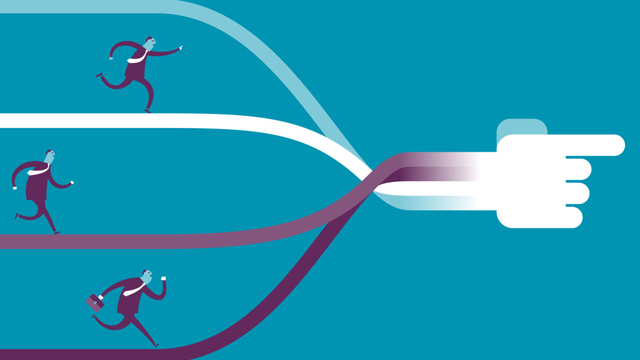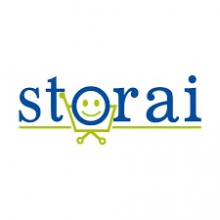Striking the balance

Business Development
346 week ago — 7 min read
Summary: Agility in business is not just about speed and flexibility but also about consistency and stability. The key lies in being able to maintain an equilibrium between the two. As a business owner are you alert and agile to this dynamism?
Agility is the ability to move swiftly with speed, to renew and transform in tandem with the changes happening both inside and outside the organisation in a high change and turbulent business environment.
Agility is not only about being reactive to the changes happening outside but also about being proactive in making the changes happen. In that sense, an organisation becomes truly a leader, a trendsetter in being the change it wants to see.
Therefore, speed with a direction is a must. Bereft of direction, organisations don’t get anywhere, and end up getting buried in the whirlpool of their own creation.

Direction is as important as speed for organisations to progress and grow
The paradox
How can organisations continue to remain agile on a sustainable basis, leveraging their true potential? This raises a conundrum before organisations: that of continuity versus display of agility as a matter of a one-time trait.
Herein lies the differentiator that enables an organisation’s journey from good to great—a play of stability and speed.
Then why do established companies struggle to become more agile? They get caught up in the quagmire of their own creation. Management layers, policies, and rules, once created to manage and drive the scale turn out to be speed breakers, ultimately hampering their ability to move fast.
This can be seen clearly in startups. These companies that are better known for their speed and time to respond, fail to maintain the early momentum as they grow bigger.
The solution
To master this apparent paradox, organisations must design structures and processes with a relatively unchanging set of core elements that define their DNA. This is nothing but their foundation. They must also create flexible and more dynamic elements that can be adapted quickly to new challenges and opportunities. The stable backbone becomes a springboard for the company, an anchor point that does not change while other factors change continuously and rapidly.
A strong DNA and a stable backbone coupled with a dynamic capability and speed give rise to an agile organisation.
Organisations that have learned the art and science of redesigning themselves for both speed and stability have eventually turned out to be long lasting.
Plotting on a 2 x 2 metric, we get four types of companies: At either of the extremes are the ‘strategic’ ones (high on both speed and stability) and ‘uninspired and laggards’ (low on both); in between are the startups (high on speed, low on stability) and rigid companies (high rigidity, low speed).
Start-ups are a bit unfocused. Bereft of stability and consistency, they lack the single-mindedness and dedication to execute their vision. They often leave projects midway in pursuit of their quest to try out something new, often ending up their teams or organisations in chaos.
Companies that fall under ‘Rigid’ are characterized by a high quotient of stability and consistency but often lack the much-needed speed. They struggle to adapt as they cling to old habits and practices until those become counterproductive and act as an obstruction for them to try out more important new work.
Agile leadership
It is therefore in having a combination of speed and stability that leaders can become strategic so that they are able to drive their organisation’s purpose with excellence while changing course when the situation demands.
These leaders have high-quality standards and expect consistency. At the same time, they have eye on the external environment and can sense when old ways of working no longer pass the test of the market in which they compete and are open to change if required.
To move closer to becoming truly agile, organisations can develop strong dashboards and performance metrics culture considering speed. They can also develop a fluid planning model that helps them manoeuvre their way through changes in response to the external environment and forces the organisation to embrace significant changes, while they maintain the stability.
Striking a balance
It is therefore important for an organisation to have a strong backbone which is structure, governance, and processes set in a way to balance the interplay and tension between speed and stability.
Structure: Agile companies don’t change their core belief and structure. It is clear to people where they belong, where they build up their expertise. There is a fair amount of certainty, security, stability, and predictability in the way these organisations conduct themselves. On top of that, they provide mechanisms for quickly assembling teams with the right talent to address the challenges and opportunities that come up. They find a way to quickly reallocate their people and team while keeping the core structure constant.
Governance: It is about decision making. A good governance model in a stable set up empowers people all across with a clear mandate that they can take the decision that they should be taking close to the customer.
Process: It is about having standard language and shared performance metrics across teams. Performance management is particularly crucial in the context of agile organisations. A departure from a top-down target-setting approach to one involving a set of performance metrics jointly owned across the value chain. Open, transparent and aligned Objectives and Key Results (OKR) enable the company to become more agile.
Agile companies regularly introspect and rethink. If necessary, redesign their structures, governance mechanisms and processes to strike a balance between speed and stability.
Summing it up
As leaders, we are always faced with a daunting task of keeping a balance between speed and stability, an act that needs an equilibrium in an ever-changing ecosystem and business arena. Are we, as leaders, alert and agile to this dynamism? Do we do something substantial as a matter of habit that will take us closer to that greater balance?
It’s time we introspected and changed.
Article by Asis Patnaik published in STOrai Magazine. Asis Patnaik is Head Human Resources (HR) of Grocery Retail at Reliance Retail. He has over 20 years of experience in HR, dealing with its various aspects and perspectives.
Disclaimer: The views and opinions expressed in this article are those of the author and do not necessarily reflect the views, official policy or position of GlobalLinker.
View STOrai 's profile
Other articles written by STOrai Magazine
The Art & Science of People Pleasing in Retail
26 week ago
Enhanced Brand Storytelling in the Digital Age
57 week ago
Most read this week













Comments
Share this content
Please login or Register to join the discussion